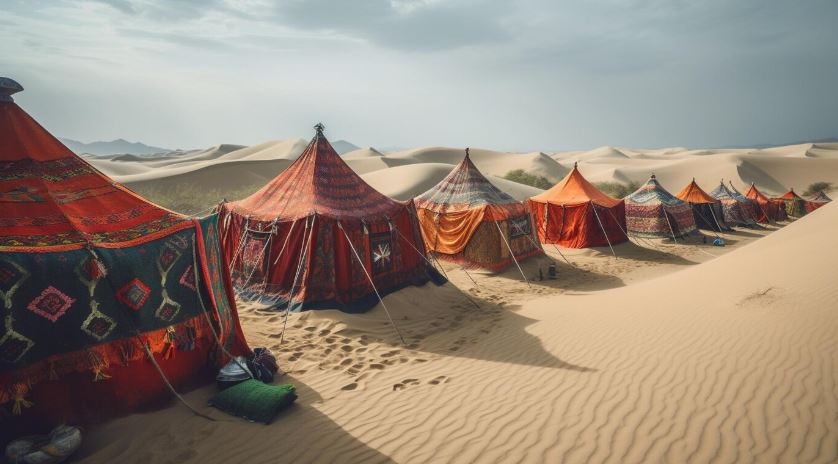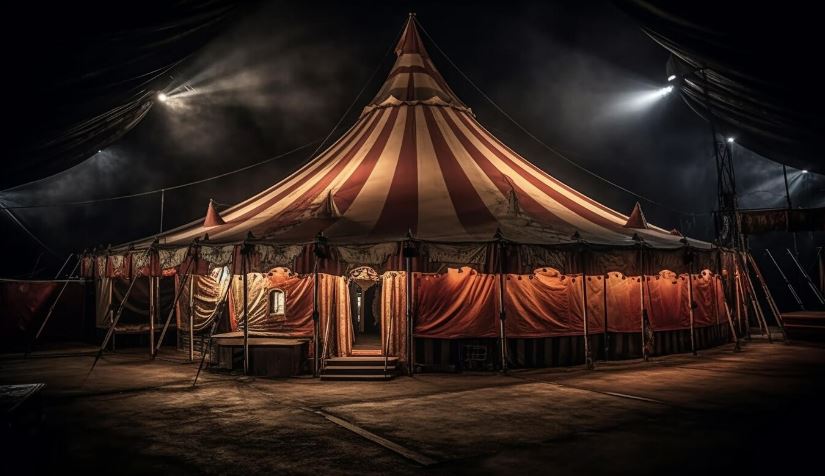Moroccan tents, with their luxurious materials and complex designs, are more than just shelter; they symbolize hospitality, history, and cultural identity. These tents, also known as caidal or Berber tents, have long played an important role in Moroccan social and cultural activities. The piece explores the cultural relevance of Moroccan tents in festivals and events, showing how they connect the past and present while providing a unique, full engagement with Moroccan tradition.
Historical Roots and Architectural Marvel
The Genesis of Moroccan Tents
Moroccan tents originated with the wandering Berber tribes of North Africa, who created these movable shelters to weather the harsh desert environment. These tents gradually grew from modest shelters to decorated settings for social gatherings, festivities, and royal courts.
Architectural Design and Craftsmanship
The Moroccan tent design shows the creativity of traditional Moroccan architecture. These tents are designed to give comfort in both the scorching sun and the freezing nights of the desert. They have thick, solid fabrics and a layout that promotes ventilation while providing enough shade.
The Heart of Moroccan Social Life
A Venue for Celebrations
The Moroccan tent has long been central to social events, from weddings and festivals to royal gatherings and diplomatic meetings. Their use in celebrations is more than just functional; it’s about creating an atmosphere that symbolizes the significance of the occasion and the warmth of Moroccan hospitality.
Symbolism and Hospitality
In Moroccan tradition, the tent is more than a physical space; it represents refuge, generosity, and unity. Hosting an event in a Moroccan tent shows kindness and respect for visitors, representing the long-held traditions of hospitality that are important to Moroccan identity.
Inside a Moroccan Tent: A Tapestry of Tradition

Luxurious Interiors
The inside of a Moroccan tent is a visual feast. Fantastically colored fabrics, complex designs, and traditional Moroccan lamps create a welcoming setting. Handmade mats cover the floor, and cushions and low sofas provide pleasant seating, allowing people to relax and talk.
The Role of Artisans
A Moroccan tent is a labor of love, requiring experienced workers specializing in metalwork, weaving, and stitching. The handiwork shows age-old uses passed down through generations, stressing the cultural significance of keeping art forms.
Moroccan Tents in Modern Celebrations
Adapting Tradition for Contemporary Events
While Moroccan shelters have a long history, they are now used in modern festivals worldwide. Due to their beauty and unique atmosphere, Moroccan shelters are becoming increasingly popular among event planners and designers for weddings, corporate events, and festivals.
Bridging Cultures
The employment of Moroccan shelters in international events shows Moroccan culture’s broad appeal. These tents act as a cultural bridge, allowing guests from many backgrounds to experience Moroccan culture and the timeless traditions of hospitality and celebration.
Challenges and Preservation
The Future of Moroccan Tents
As the globe grows more globalized, traditional techniques for building and maintaining Moroccan canopies risk becoming obsolete. Preserving these traditions is critical for protecting the past and allowing future generations to appreciate the beauty and significance of the Moroccan tent.
Initiatives for Preservation
Cultural organizations and artists are collaborating to preserve tradition by providing workshops and internships for young people to learn the technique. These initiatives are critical to maintaining the cultural and artistic history that the Moroccan tents symbolize.
More Than Just a Tent
Moroccan shelters are an outstanding representation of Moroccan culture, showcasing the country’s history, traditions, and principles of hospitality and community. Moroccan tents continue to grace festivities and events worldwide, providing a place for gatherings and a deep journey into a rich past. Preserving the skill and tradition of Moroccan shelters requires more than maintaining a physical structure; it also requires keeping a way of life that has brought people together for centuries.





